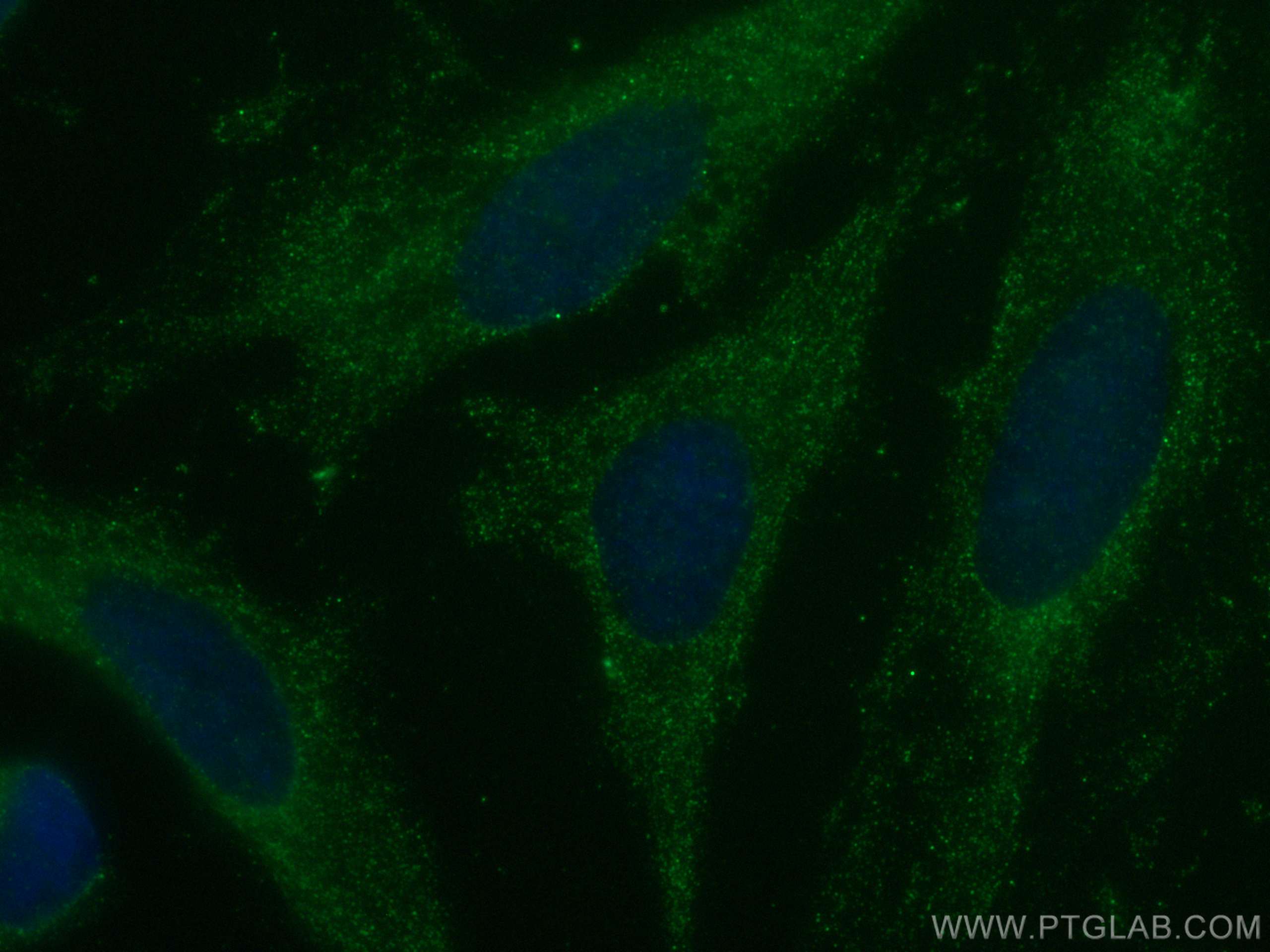验证数据展示
经过测试的应用
| Positive IF/ICC detected in | HeLa cells |
For other applications, we recommend the unconjugated version of this antibody, 67398-1-Ig
推荐稀释比
| 应用 | 推荐稀释比 |
|---|---|
| Immunofluorescence (IF)/ICC | IF/ICC : 1:50-1:500 |
| It is recommended that this reagent should be titrated in each testing system to obtain optimal results. | |
| Sample-dependent, Check data in validation data gallery. | |
产品信息
CL488-67398 targets Caspase 4 in IF/ICC applications and shows reactivity with Human samples.
| 经测试应用 | IF/ICC Application Description |
| 经测试反应性 | Human |
| 免疫原 | Caspase 4 fusion protein Ag29488 种属同源性预测 |
| 宿主/亚型 | Mouse / IgG1 |
| 抗体类别 | Monoclonal |
| 产品类型 | Antibody |
| 全称 | caspase 4, apoptosis-related cysteine peptidase |
| 别名 | CASP 4, CASP4, Caspase 4, Caspase4, ICE(rel) II, ICE(rel)II, ICEREL II, ICH 2, ICH2, Mih1/TX, Protease ICH 2, Protease TX, TX |
| 计算分子量 | 377 aa, 43 kDa |
| 观测分子量 | 43-48 kDa |
| GenBank蛋白编号 | BC017839 |
| 基因名称 | Caspase 4 |
| Gene ID (NCBI) | 837 |
| RRID | AB_2934542 |
| 偶联类型 | CoraLite® Plus 488 Fluorescent Dye |
| 最大激发/发射波长 | 493 nm / 522 nm |
| 形式 | Liquid |
| 纯化方式 | Protein G purification |
| UNIPROT ID | P49662 |
| 储存缓冲液 | PBS with 50% glycerol, 0.05% Proclin300, 0.5% BSA , pH 7.3 |
| 储存条件 | Store at -20°C. Avoid exposure to light. Stable for one year after shipment. Aliquoting is unnecessary for -20oC storage. |
背景介绍
Caspase 4 (CASP4), is a member of the cysteine-aspartic acid protease (caspase) family. Sequential activation of caspases plays a central role in the execution-phase of cell apoptosis.Caspase 4 is able to cleave and activate its own precursor protein, as well as caspase 1 precursor. Overexpression of caspase 4 will induce cell apoptosis.
实验方案
| Product Specific Protocols | |
|---|---|
| IF protocol for CL Plus 488 Caspase 4 antibody CL488-67398 | Download protocol |
| Standard Protocols | |
|---|---|
| Click here to view our Standard Protocols |
